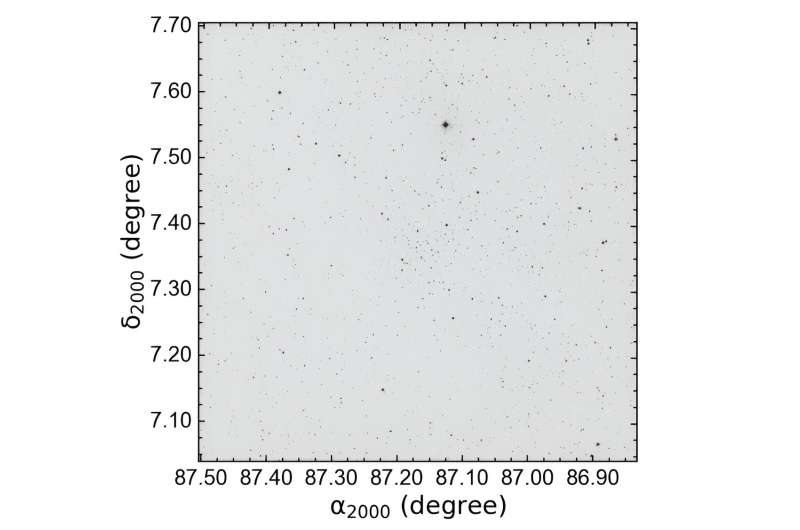November 2, 2023 report
This article has been reviewed according to Science X's editorial process and policies. Editors have highlighted the following attributes while ensuring the content's credibility:
fact-checked
preprint
trusted source
proofread
Turkish astronomers investigate open cluster Collinder 74

Astronomers from Istanbul University in Turkey have conducted a comprehensive study of a Galactic open cluster known as Collinder 74. Results of the study, presented in a paper published October 20 on the pre-print server arXiv and accepted for publication in Physics and Astronomy Reports, shed more light on the properties and nature of this cluster.
Open clusters (OCs) are groups of stars loosely gravitationally bound to each other, formed from the same giant molecular cloud. To date, more than 1,000 of them have been discovered in the Milky Way, and scientists are still looking for more, hoping to find a variety of these stellar groupings. Studying OCs in detail could be crucial for improving our understanding of the formation and evolution of our galaxy.
Located about 8,000 light years away from the Earth, Collinder 74 (or Coll 74 for short) is a centrally concentrated intermediate-age (estimated to be about 1.5–2.0 billion years old) open cluster located in the third Galactic quadrant toward the Galactic anti-center region. Previous observations have suggested that the cluster's metallicity is estimated to be between -0.083 and 0.07, and its reddening is within the range of 0.274 and 0.511.
Given that many parameters of Coll 74 remain uncertain, Istanbul University's Talar Yontan and Remziye Canbay decided to make use of ESA's Gaia satellite to inspect the properties of this cluster.
"In this study, we have used the Gaia Third Data Release (Gaia DR3) to investigate an intermediate-age open cluster Collinder 74," the researchers wrote.
First of all, the astronomers identified 102 most likely member stars of Coll 74 within the limiting radius of the cluster. These stars were used further in order to obtain structural and fundamental astrophysical parameters of Coll 74.
Furthermore, Yontan and Canbay found four blue straggler stars (BSS) among the identified cluster members. These BSS show flat radial distribution as three of them are located at a radial distance of 0.42, 0.88, and 0.98 arcminutes, and the remaining one is located at approximately 6.25 arcminutes.
The study found that Coll 74 has mean proper-motion values of 0.960 and −1.526 mas/year in right ascension and declination, respectively. The distance to the cluster was calculated to be about 9,200 light years, while its age was estimated to be 1.8 billion years.
The results indicate that Coll 74 has a radius of 26.9 light years, total mass of 365 solar masses, and its metallicity is at a level of -0.052. The mass function (MF) slope of the cluster was estimated to be approximately 1.34.
When it comes to the orbital parameters of Coll 74, the authors of the paper found that it has a radial velocity of 20.55 km/s, orbital period of about 291 million years, and orbital eccentricity of approximately 0.081. They concluded that Coll 74 is a member of the thin-disk component of the Milky Way galaxy.
More information: T. Yontan et al, Comprehensive Analysis of the Open Cluster Collinder 74, arXiv (2023). DOI: 10.48550/arxiv.2310.13582
Journal information: arXiv
© 2023 Science X Network





















